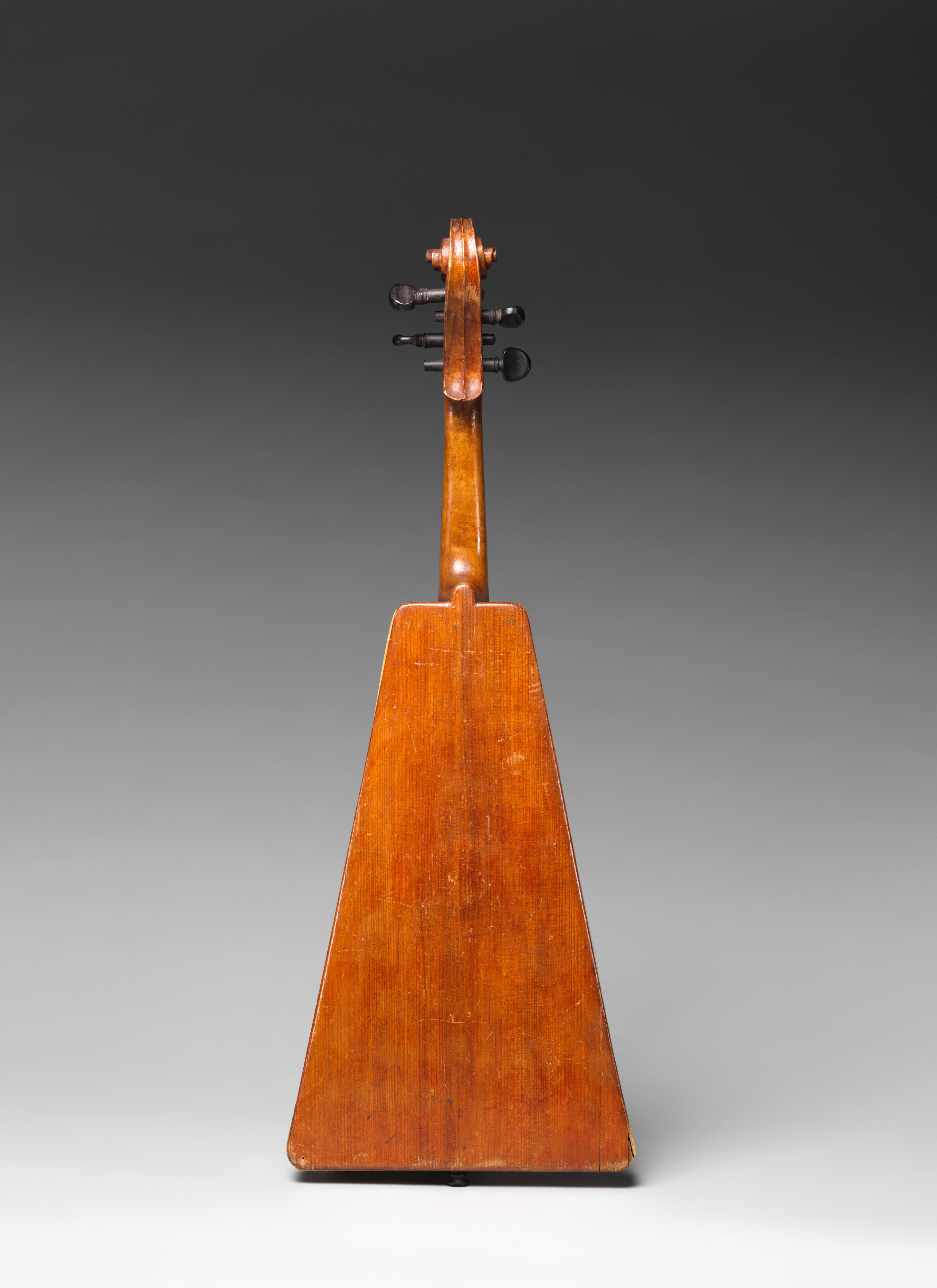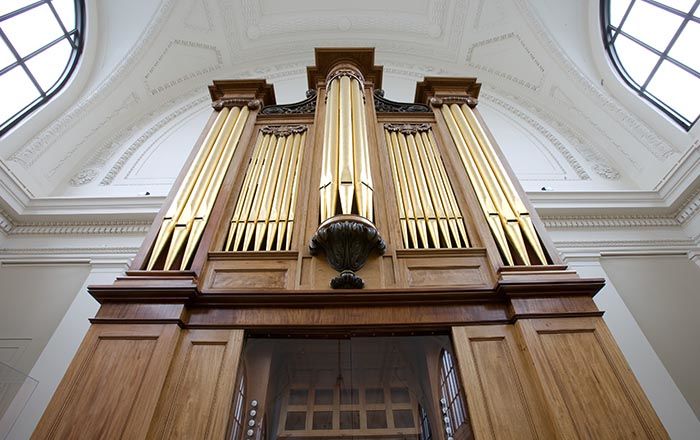"Savart model" Violin
Ch. Michel French
Not on view
The builder of this instrument is presumed to be Ch. Michel whose name appears written in pencil on the inside of the instrument, visible through the treble sound hole. This unknown maker followed the unusual and radical instrument design of French physicist Félix Savart. The unusual trapezoidal-shaped violin design introduced by Savar, was based on the acoustical theories of the German scientist Ernst Chladni, who had studied vibrating plates. In addition to its unusual shape, the Savart design has a flat top and back. Savart published his design in 1819 in the hope that violin builders would make instruments of this type, undoubtedly, Michel used these plans to build this instrument.
Technical description: Savart model violin with flat top and back and a trapezoidal-shaped body; top and back of wide-grain spruce;, slot-shaped sound hoes with rounded ends; edge of top and back flush with the ribs; plain maple ribs and neck; neck steeply angled back from the plane of the body; fingerboard of spruce covered in stained hardwood; ebony nut on bottom of instrument (no tailpiece); top block is continuous with cornber blocks; no linings; bass bar located below center seam; medium orange varnish over entire body.
This image cannot be enlarged, viewed at full screen, or downloaded.
This artwork is meant to be viewed from right to left. Scroll left to view more.



